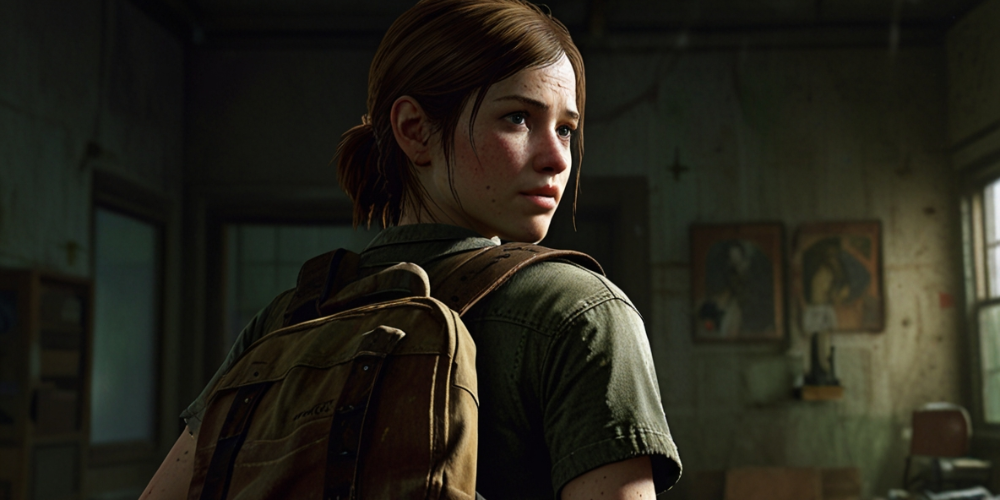The Mechanics of Survival: Analyzing The Last of Us Gameplay
- Aug 15, 2024
- 0

The Last of Us, a masterpiece developed by Naughty Dog, intricately marries story and gameplay, allowing players to step into a post-apocalyptic world rife with danger and human emotion. The mechanics of survival within this game are not merely a facade but deeply woven into its gameplay, challenging players to adapt, think strategically, and make hard choices at every turn. Engaging with the game from a first-person perspective opens up a nuanced comprehension of these survival mechanics.
The Importance of Resources
In The Last of Us, resources are scarce, and every item counts. Players must search their environment diligently, scavenging for essentials like food, ammunition, and crafting materials. The camera settings and character control allow for an intimate experience, making every resource found feel hard-earned. Players soon learn to assess their surroundings meticulously, as the tension is palpably felt when a shot rings out, and the decision to fight or flee must be made quickly.
Crafting for Survival
The crafting system in The Last of Us enhances the survival experience significantly. As you rummage through derelict buildings, the ability to create tools, weapons, and health supplies is crucial. A player's imaginative use of found objects, like combining parts to create a makeshift bomb, emphasizes the need for innovation and resourcefulness. Each crafted item can turn the tide in a confrontation, making the process a critical aspect of gameplay.

Stealth vs. Confrontation
Choosing stealth over direct confrontation can often be a game-changer. The Last of Us encourages this approach through a sophisticated AI system that responds to player movement and sound. When players remain silent, navigating through the shadows, they can bypass threats effectively. The thrill of stealth play, felt through the mechanical responsiveness and sound design, creates truly immersive and nerve-wracking moments.
Emotional Investment in Characters
The emotional weight of the narrative enhances the survival elements profoundly. Players are not just managing resources but also nurturing relationships with characters like Joel and Ellie. This investment in characters fuels decisions, sometimes prioritizing the protection of allies over logical survival tactics. Understanding the intricate backstories of the characters adds a layer of complexity, making survival feel much more profound than mere gameplay mechanics.
Environmental Storytelling
The landscapes within The Last of Us speak volumes about the world that has been lost. Players experience environmental storytelling through the remnants of civilization: abandoned cars, overgrown buildings, and personal belongings cluttering the ground. These details create an atmosphere that constantly reminds players of the stakes at play. The striking visuals engage players' senses, while the excitement of exploration becomes essential for survival.

Sound Design as a Survival Mechanic
The sound design serves as an unsung hero in the survival mechanics of The Last of Us. The interplay of ambient noises, including the distant cries of infected or the rustling of leaves, heightens tension considerably. Players rely on audio cues to navigate danger, often leading them to pause and listen, allowing fear and caution to dictate their actions. The very act of listening becomes a survival skill in itself.
Dynamic AI Encounters
The AI in The Last of Us contributes significantly to the survival mechanics. Infected enemies and human opponents exhibit behavior that can shift unpredictably. Enemies communicate, flank players, and exhibit nuanced reactions depending on the scenario, which necessitates adaptability. This dynamic interaction challenges player strategies, making encounters more intense and unpredictable.
The Power of Choices
Player choices serve as a binding thread throughout the gameplay experience. Deciding when to engage in combat, when to craft items, or when to save resources can lead to different outcomes. This decision-making process helps shape the player's journey, influencing not just their survival but also the narrative trajectory. The weight of these choices can create tension and prolong the experience, making each moment feel significant.
Exploration as a Survival Strategy
Exploration is pivotal in The Last of Us, allowing players to find hidden resources and secrets. Taking the time to explore each environment can yield powerful items and upgrades, reinforcing the necessity of curiosity in survival. The balance between exploration and progression builds a sense of urgency while rewarding players who invest time and effort into their surroundings.

The Role of Combat Mechanics
Combat mechanics in The Last of Us delve into the rawness of survival. Players are rewarded for thoughtful strategies rather than brute force, enabling immersive melee and ranged combat flows. The fluidity of the controls and the weight of the characters enhance the feeling of vulnerability. Engaging enemies becomes a high-stakes game where every missed shot or close call exacerbates the inherent dangers of the apocalyptic world.
Coping with Scarcity
Scarcity underpins much of The Last of Us, reinforcing the elements of survival. The game masterfully employs a system where ammunition is limited, forcing players to make calculated choices about when to shoot or conserve. This creates a palpable tension that echoes through each encounter, as the fear of running out of resources looms large over every player’s head. Adapting to this scarcity sharpens survival instincts and drives emotional narratives.
The Unexpected Nature of Events
Encounters within The Last of Us are often unpredictable, mirroring real-life survival situations where individuals cannot foresee impending dangers. The game employs random events triggered by player choices or environmental factors, creating an ever-shifting gameplay landscape. Each playthrough can yield different experiences, keeping players engaged through the element of surprise and uncertainty.
The Evolution of Skills
As players progress, they develop skills through a robust upgrade system. These skill enhancements not only improve combat effectiveness but also bolster survival capabilities. Making choices about which skills to develop can significantly impact gameplay dynamics, reinforcing the customizable aspect of survival strategies. This growth mirrors character development, intertwining gameplay with narrative progression.
Coping with Moral Complexities
Moral dilemmas are an intrinsic part of The Last of Us, presenting players with difficult choices that test their ethics. These scenarios go beyond mere survival; they evoke deep emotional responses that resonate with players. Engaging with these moral complexities adds richness to the gameplay experience, forcing players to confront their beliefs regarding humanity in desperate times.
The Community Experience
Interactions with other characters and factions throughout the game create an engaging community dynamic. Players are constantly faced with scenarios that involve trust, betrayal, and alliances. These social interactions contribute to the overarching survival narrative, especially as players grapple with the implications of collaborating with other survivors. The weight of these social choices intensifies the survival mechanics and emotional investment.